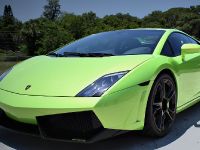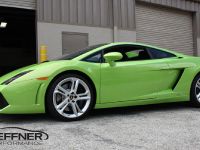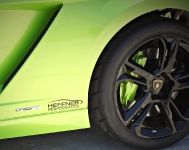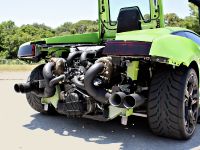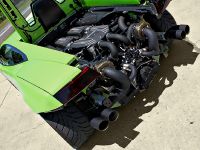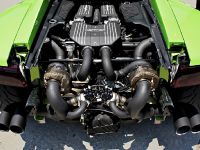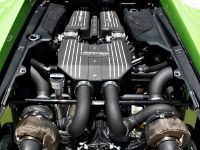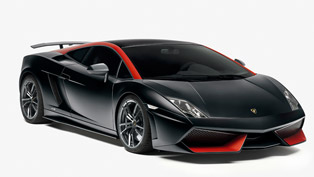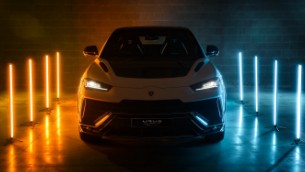Heffner Performance Twin Turbo Lamborghini LP-560 [VIDEO]
Heffner Performance Twin Turbo Lamborghini LP-560 is the outstanding result of a project which started two months ago in the design lab of the Heffner Performance. Back then Jason Heffner received the request to do something exceptional with the performance of the already great Lamborghini Gallardo LP-560 Verde Ithaca.
The 560 horsepower weren't enough, so the Heffner decided to modify this vehicle in terms of aesthetics, power and drivability characteristics. The transformation began, and its first phase included a work on entirely new turbo system with a certain goal in mind. The details of the new system were planned carefully, in order to give it an OEM quality appearance, fit, finish and technical superiority.
The second phase included a number of cosmetic changes. Of course, having a unique system makes it almost obligatory to have a unique appearance as well.
The first phase began and what the mechanics did at first was to get the car on the dyno to get some baseline power figures. All factory elements that weren't needed anymore were removed and this made it ready for its one-of-a-kind turbo system.
The team put a lot of attention on the location of the components. They wanted to keep the hot parts away from the cold parts. In addition, they kept the intercooler away from the exhaust, and wanted the air inlet plumbing to be able to take in fresh, cool air.
The overall function and expandability of the system was the next point of the work of Heffner Performance team. They have selected tubing diameters, intercooler core and turbochargers that would function very well at the bolt on level.
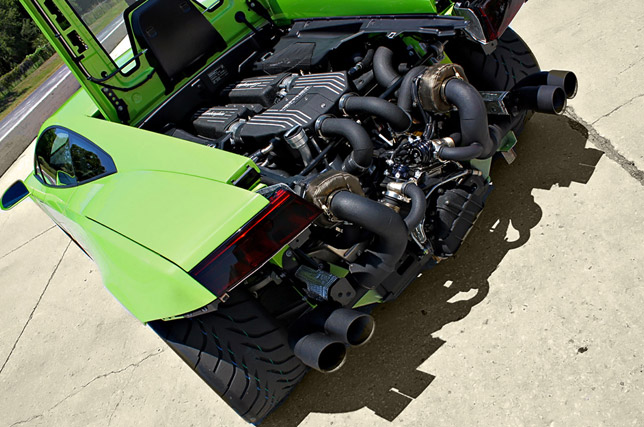
Next, the appearance of the completed system was made like it has always been in the car – in other words – appearance of a factory installed system.
The modification of the LP560's new system included Bosch electronics and direct injection. The first ones have full time, active wide band oxygen sensors, full time, active knock control as well as a number of other important safety features.
This basically means that if the fuel you use for the car has a low quality, the knock sensors will detect the detonation and remove the necessary amount of ignition timing to prevent from damaging the engine. The wide band oxygen sensors constantly monitor the air / fuel ratio and based on their readings the engine controller immediately compensate for any changes in fueling requirements.
Then, if the engine controller can not compensate for some reason, it will close the throttle bodies and trigger a fault code to direct you in the area of the issue. Here, the retention of the direct injection, especially in a bolt on configuration, is essential for the prevention of detonation.
Next, the direct injection system introduces fuel into the combustion chamber before the ignition. The purpose of this is that it almost makes it impossible to detonate the engine. In addition, if the fuel in the engine is not enough for the preignition to happen, it again makes it hard to create detonation.
Heffner located the exhaust tips at first. A pair of custom billet wheeled ball bearing turbos were next provided in order to support the expected 1400 whp. The specialists have chosen 3.5" tubing for the downpipe, and then located the air inlet plumbing next.
As a result the completed downpipe is very clean, unrestrictive piece. What happened next is the plumbing in a pair of TIAL 44mm MVR wastegates. The exhaust flowed out of the mid pipe and back into the downpipe smoothly, which was made for very predictable boost control.
Next, they fabricated the intercooler and an air discharge end tank which will not restrict the air charge and will compliment the factory intake manifold nicely. Then the air inlet end tank and air charge pipes were also fabricated.
Jet Hot provided the hot side with a 2000 degree black ceramic coating. On the other hand the cold side piping received a black wrinkle finish. The latter one resembles a factory finish on the intake manifold.
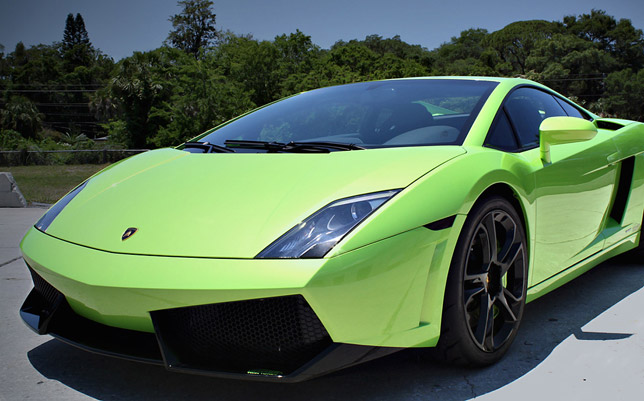
At last, they made a billet cover for the intercooler with Heffner's logo and raised the lines to give a look that is similar to "rolled out of the factory" one. The end result can be summed up in the following numbers:
Twin Turbo / Stock engine
- 1034 Engine HP / 879 WHP on 100 Octane
- 963 Engine HP / 819 WHP on 93 Octane
Source: Heffner Performance
